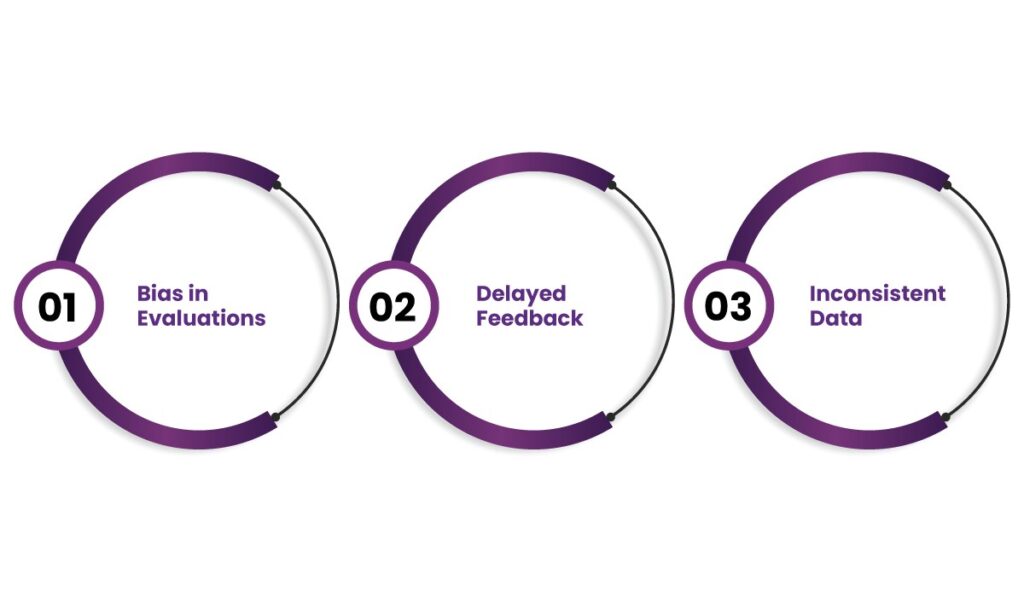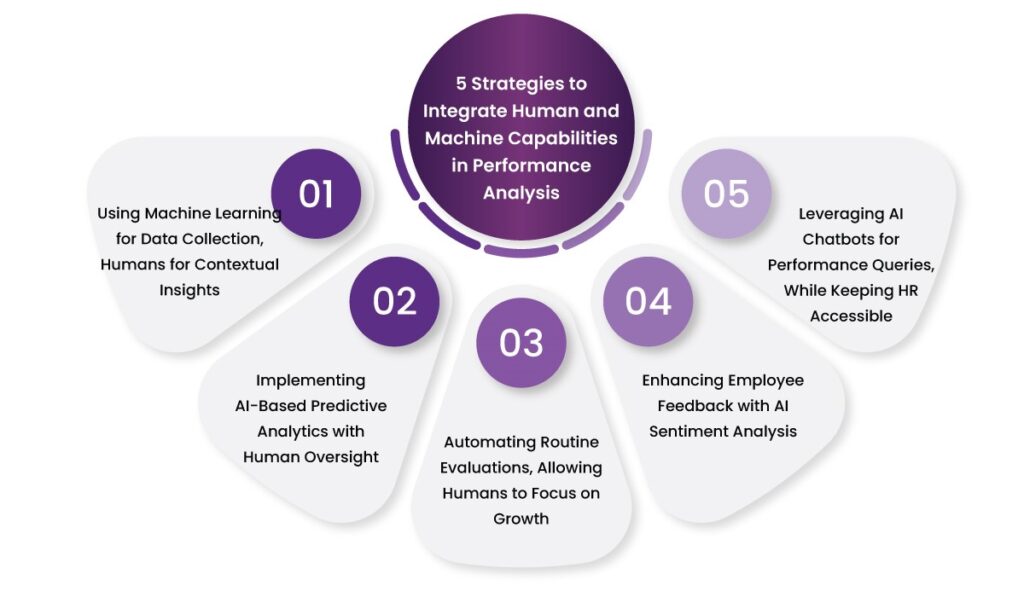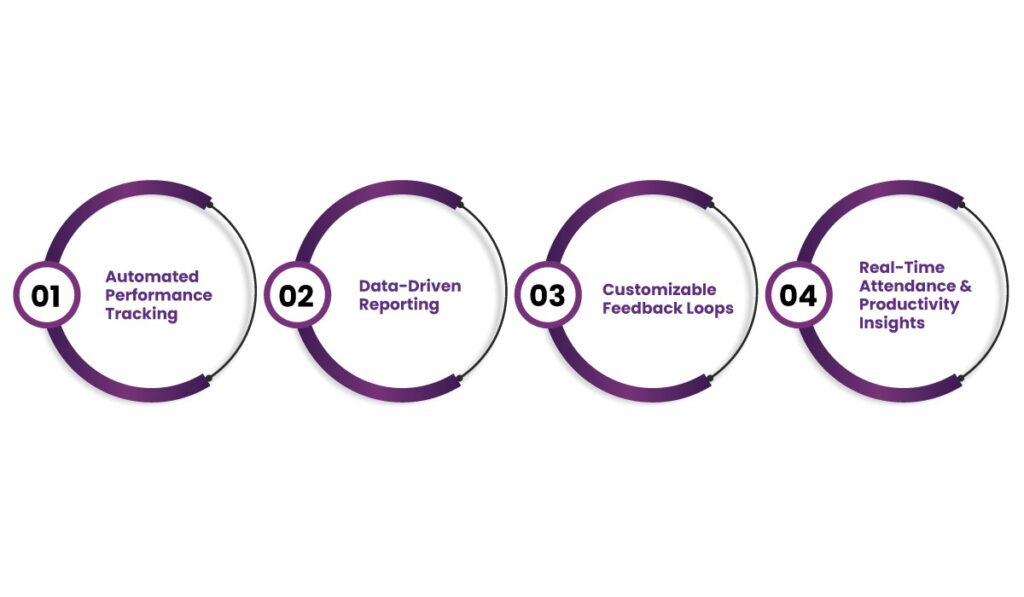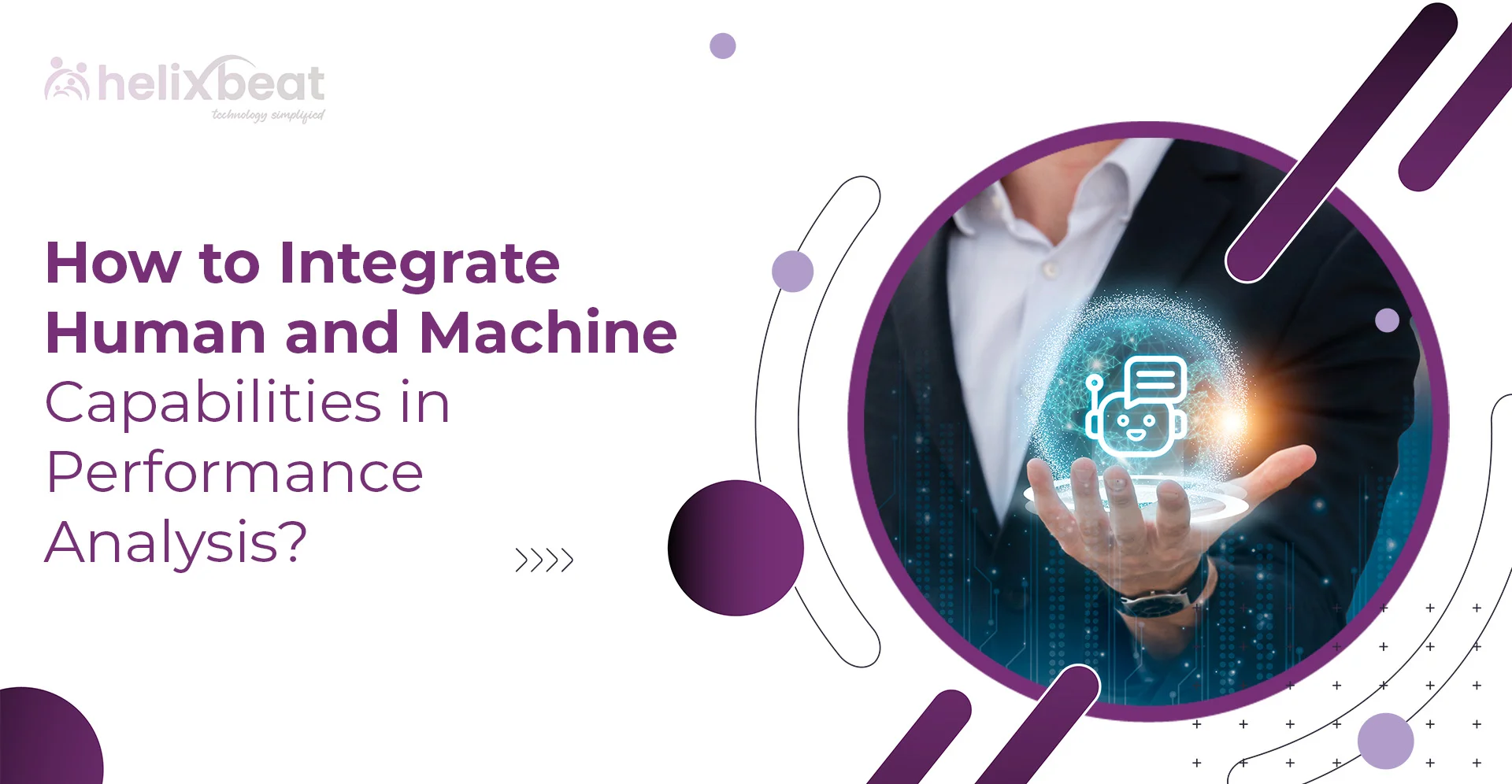Performance analysis has evolved significantly. Gone are the days when HR teams relied solely on manual evaluations and intuition. Today, businesses can harness machine learning in HR to drive data-backed decisions while still incorporating human judgment. But how can we effectively merge both to achieve the best outcomes?
Consider this: A manager understands that employees face personal challenges affecting their productivity. However, a machine learning algorithm only detects a decline in performance metrics. If businesses rely exclusively on AI, they risk overlooking the human element. Conversely, depending only on human insights can lead to subjective evaluations and missed data-driven accuracy. The key lies in a balanced integration of machine learning in HR and human expertise.
In this blog, we’ll explore how businesses can effectively combine machine learning and human judgment to enhance performance analysis and workforce decision-making.
Table of Contents
Why is Performance Analysis Evolving?
Traditional performance analysis relied heavily on annual reviews and subjective feedback, often leaving employees without timely insights into their progress. However, modern businesses require real-time evaluations, predictive analytics, and actionable intelligence to optimize workforce performance. This is where machine learning in HR plays a transformative role, allowing companies to assess employee contributions more effectively while reducing bias and inconsistencies.
The Limitations of Traditional Performance Analysis
- Bias in Evaluations – Human managers, even with the best intentions, can be influenced by personal biases or subjective opinions. This can lead to inconsistent performance ratings, favoritism, or underappreciation of employee contributions.
- Delayed Feedback – With annual or biannual reviews, employees often do not receive timely insights into their strengths and areas for improvement. By the time feedback is delivered, corrective actions may be too late to have a meaningful impact.
- Inconsistent Data – Relying only on subjective assessments results in gaps in performance evaluation. Without data-driven insights, it becomes difficult to measure productivity trends accurately, leading to unreliable decision-making.

How Machine Learning in HR Enhances Performance Evaluation?
- Data-Driven Insights – Machine learning in HR leverages AI-powered analytics to assess employee performance based on objective metrics, ensuring a fair and unbiased evaluation process.
- Real-Time Monitoring – Unlike traditional performance reviews, AI-driven systems provide continuous feedback, allowing employees to make necessary improvements on an ongoing basis. This enhances engagement, motivation, and productivity.
- Pattern Recognition – Machine learning algorithms can identify hidden patterns in employee performance, such as early signs of disengagement or burnout, which may go unnoticed in manual assessments. This enables managers to implement proactive interventions to retain top talent.

By integrating machine learning in HR, businesses can streamline performance evaluations, improve workforce management, and ensure data-backed decision-making for long-term success.
5 Strategies to Integrate Human and Machine Capabilities in Performance Analysis
To get the most out of performance analysis, businesses must strike a balance between machine learning in HR and human expertise. While AI-powered tools provide efficiency, accuracy, and predictive analytics, human judgment is crucial for understanding context, fostering employee engagement, and making strategic decisions. Here’s how organizations can effectively integrate both.
1. Using Machine Learning for Data Collection, Humans for Contextual Insights
Machine learning in HR enables businesses to track employee attendance, productivity, and project completion rates with precision. AI-powered platforms like Synergy HCM can identify patterns and anomalies, ensuring that no performance trend goes unnoticed. However, data alone does not tell the full story.
For instance, if an employee’s productivity declines, the AI system will flag it as a performance drop. But only a manager can determine if the issue stems from burnout, workplace challenges, or personal difficulties.
Best Practice: Leverage AI for tracking and trend analysis, while HR professionals provide context and offer tailored interventions.
2. Implementing AI-Based Predictive Analytics with Human Oversight
Predictive analytics in machine learning in HR helps forecast employee performance and attrition risks. AI tools analyze past behaviors, absenteeism trends, and productivity levels to predict possible disengagement. However, HR teams should not take these predictions at face value.
If an AI model flags an employee as likely to leave, managers should conduct personal check-ins to understand the root cause before taking action. Human conversations add depth and nuance to AI-generated insights, preventing premature decisions based solely on predictions.
Best Practice: AI generates forecasts, but HR professionals validate insights through direct communication and engagement.
3. Automating Routine Evaluations, Allowing Humans to Focus on Growth
Repetitive tasks such as tracking attendance, monitoring KPIs, and generating performance reports can be fully automated using machine learning in HR. AI-driven tools like Synergy HCM can analyze performance data and provide accurate reports on employee progress.
By automating routine evaluations, HR professionals can focus on what truly matters—mentorship, career development, and employee motivation. Instead of spending hours on manual performance assessments, managers can dedicate time to coaching employees, setting career goals, and fostering leadership development.
Best Practice: Let AI handle routine performance tracking, while HR professionals focus on employee growth and engagement.
4. Enhancing Employee Feedback with AI Sentiment Analysis
AI-powered sentiment analysis can scan employee feedback, emails, and surveys to detect mood trends in the workplace. While AI can identify patterns in sentiment shifts, interpreting emotions and fostering trust remains a human responsibility.
For example, Synergy HCM can flag dissatisfaction trends by analyzing engagement surveys. However, it is up to HR professionals to address these concerns through one-on-one discussions, well-being programs, and policy adjustments. AI can highlight emerging workplace issues, but human empathy is needed to implement effective solutions.
Best Practice: Use AI for sentiment analysis but allow HR leaders to handle morale-building strategies and engagement initiatives.
5. Leveraging AI Chatbots for Performance Queries, While Keeping HR Accessible
AI-powered HR chatbots can provide employees with instant answers to performance-related questions. Whether it’s checking performance goals, review cycles, or improvement plans, chatbots improve efficiency by handling frequently asked questions.
However, AI should not replace human interaction in HR. Employees must always have access to HR professionals for discussions that require deep understanding, empathy, and strategic decision-making.
Best Practice: Automate general HR queries but ensure that HR professionals remain available for critical employee concerns and career discussions.

The Role of Synergy HCM in Integrating AI and Human Capabilities
A well-rounded HRMS like Synergy HCM seamlessly integrates machine learning in HR with human expertise, ensuring a balanced approach to performance management. By leveraging AI-driven analytics, Synergy HCM enhances workforce efficiency while maintaining the human touch necessary for employee engagement and growth.
- Automated Performance Tracking – Synergy HCM continuously monitors employee productivity, attendance, and goal progress, eliminating manual tracking errors and ensuring accurate performance evaluations.
- Data-Driven Reporting – AI-generated reports provide real-time insights, helping HR teams make informed, objective decisions based on measurable performance metrics.
- Customizable Feedback Loops – While AI-driven evaluations highlight trends and anomalies, HR managers can integrate one-on-one discussions to provide personalized feedback and mentorship.
- Real-Time Attendance & Productivity Insights – Synergy HCM ensures managers have up-to-date data on workforce engagement, absenteeism, and overall efficiency, allowing them to take proactive measures.

By leveraging machine learning in HR, Synergy HCM optimizes performance analysis, predictive insights, and workforce planning, while ensuring HR professionals retain control over strategic decision-making. This integration empowers organizations to enhance employee productivity, engagement, and long-term growth.
Final Words
Integrating machine learning in HR with human expertise is not about replacing one with the other. Instead, it focuses on enhancing decision-making, reducing bias, and optimizing performance analysis.
By automating data collection, leveraging predictive analytics wisely, and ensuring AI complements human decision-making, businesses can create a workforce that is both data-driven and deeply human-centric.
Synergy HCM makes this integration seamless, equipping HR teams with advanced AI capabilities while ensuring the human touch remains at the core of workforce management.
Want to see how AI can transform your HR processes? Try Synergy HCM today!
FAQs
1. How does machine learning in HR improve performance analysis?
Machine learning provides data-driven insights, eliminates bias, and ensures real-time monitoring, making performance evaluation more precise.
2. Can AI completely replace human decision-making in HR?
No, AI should complement human expertise, providing data while humans add context and emotional intelligence.
3. How does Synergy HCM integrate AI in HR processes?
Synergy HCM automates tracking, reporting, and sentiment analysis while allowing HR teams to provide human-driven solutions.
4. How does AI help reduce bias in performance reviews?
AI evaluates employees based on data and patterns, minimizing favoritism and subjectivity in reviews.
5. What are the risks of using AI in performance analysis?
Over-reliance on AI without human oversight may lead to misinterpretations of employee performance.
6. Can AI detect employee burnout?
Yes, AI-powered HRMS can analyze productivity drops, absenteeism trends, and feedback sentiment to flag burnout risks.














